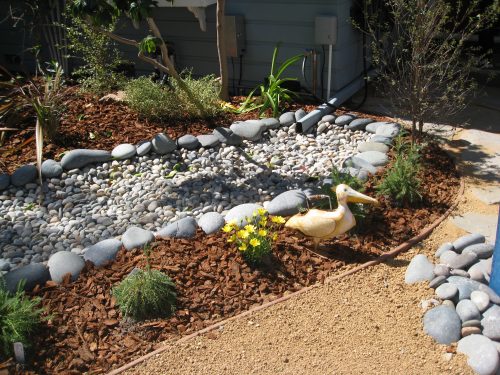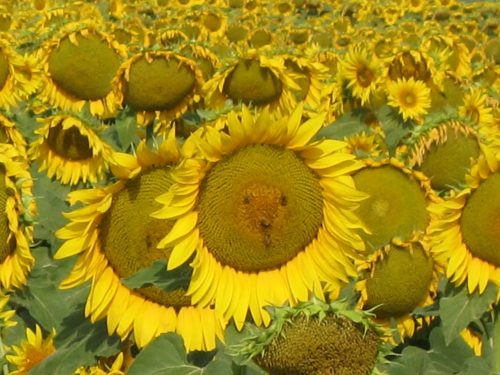I drove to my favorite nursery and, as I walked from my car to the nursery entrance, I felt the first drops of rain land on my nose. Time is of the essence, I thought. Quickly I ordered up four bags of Bumper Crop (an organic soil amendment that includes bag guano, chicken manure, worm castings and a bunch of other great things). One bag for each raised bed in my community garden plot.
After loading them into the back of my car, I drove to the garden (after a quick pit stop to change into gardening clothes at home – I think it was a 30 second quick change!). The raindrops were starting to come down with regularity. I ripped open each bag and dumped the contents into a raised bed and smoothed it out over the surface. There was no time to turn the soil, it was officially raining now. That otta do it, I thought. I dusted off my wet gloves and went home to let the rain do its job.
This is what I call modified compost tea, or top dressing with a little help from Mother Nature. (Note: I’m using the words ‘compost’ and ‘manure’ interchangeably here, but they are in fact two different things. In order to avoid harmful bacteria, I’m only going to recommend using composted ‘whatever’ here, nothing raw. After compost or composted manure has cooked at 160 degrees or more, you’re safe to use it in your garden.) When you water on top of this, gravity sends nutrients down into the soil beneath the top dressing of compost. It’s like brewing tea in your garden, only with compost. It doesn’t transfer microbial life to your soil, but it sends out minerals and nutrients. This is technically called compost leachate, but I think if you said it to anyone, you might get a blank stare in return.
True manure tea is something you can do at home very easily. Get a bucket or barrel of water, some burlap or cheese cloth, and of course, composted manure. Wrap up the composted manure in the burlap or cheese cloth, and tie it closed and secure it to the middle of a broom handle or some other stick-like instrument. Lower the “tea bag” into the water and lay the broom handle across the top of the barrel. Cover it and let it steep for a few days. In order to avoid anaerobic activity, which can create harmful bacteria, you should aerate the tea daily.
When you remove the tea bag, you will have rich compost tea. You will want to dilute the final product before applying it, so as not to burn your plants. This can be used when watering (once a week for stressed plants or seedlings just getting started, once a month once they’ve established) or foliar feeding.
Whether you use compost tea or top dress your plants on a monthly basis, you will reap great rewards from your happy plants all season long.



